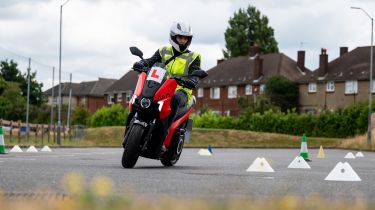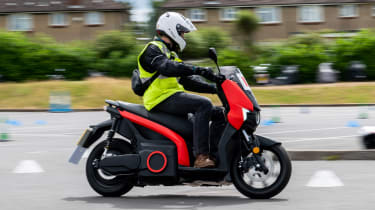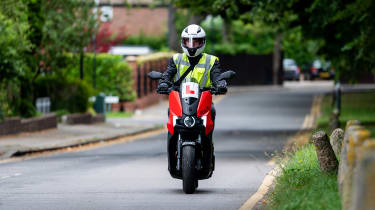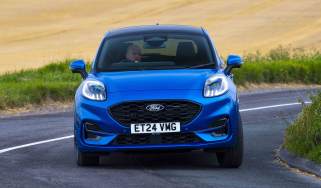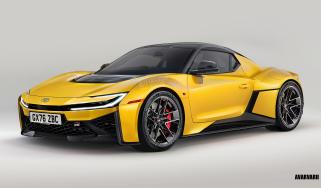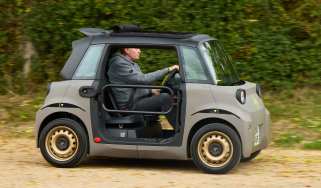How to pass your CBT test and ride a motorcycle on L-plates: motorbike and moped training explained
Passing Compulsory Basic Training (CBT) allows you to ride a motorcycle of up to 125cc on the road unsupervised, and is the first step towards getting a full motorcycle licence
The Compulsory Basic Training, or CBT for short, is the first course any motorcycle or scooter rider must pass before being allowed to ride on the road unsupervised.
According to UK government statistics there are more than 1.35 million motorcycles registered in the UK as of 2023. As these riders will appreciate, there are a number of reasons why someone would want to ride a motorcycle. Whether you want to cut through heavy city traffic, work as a delivery rider or take the first step up to a full motorbike licence, you’ll first need to pass your CBT before hitting the road on two wheels.
Read on to find out everything you need to know about CBT, including what it is, what you need to bring with you, how long it takes, what’s involved and how you pass.
What is the CBT?
CBT stands for Compulsory Basic Training and that just about sums it up; it’s a mandatory minimum standard of riding you have to prove you can meet in order to be allowed out unsupervised on the road.
Assuming you’re starting from the very beginning, the motorcycle training school you’ve chosen to do your compulsory basic training through will teach you everything you need to know - from safely wheeling the bike around and using the side stand, through to riding on the road.
The CBT training usually takes the form of a one-day course and it’s very common for people to go from having no riding experience to receiving their CBT certificate (also known as a DL196 certificate).
Your CBT certificate will last for two years before it needs to be retaken, that’s unless you pass your full bike licence in that time.
In the UK, the cost of a CBT typically ranges from £130 to £190, but depends where you do your training.
What can I ride on a CBT?
You can complete your CBT at age 16, but you will be restricted to riding a 50cc moped or scooter.
From age 17 or above, a CBT allows you to legally ride a motorcycle or scooter of up to 125cc and a power output of up to 11kW (14.7bhp) on UK roads.
If you complete your CBT, there are a few rules you must adhere to when riding on public roads. You must always display L-plates at the front and rear of the bike, you cannot go on motorways and you cannot carry pillion passengers.
The CBT course: in detail
The CBT course is broken down into five different parts and can take up to a full day to pass, depending on how quickly you learn.
The five different parts of the CBT course are:
- Introduction and eyesight checks
- On-site training
- On-site riding
- On-road training
- On-road riding
It’s important to note that the Compulsory Basic Training isn’t a simple pass or fail course. While it’s not possible to fail any single part of the CBT, your instructors may decide that you require more time or more training on a specific module before moving onto the next part of the course.
Part one: Eyesight check and classroom instruction
Once you’ve met with your instructor and they’ve seen your full or provisional UK driving licence, they’ll perform an eyesight check by having you read a number plate from 20 metres away.
Assuming you pass this, the first stage of the training takes place in a classroom, where your instructor will take you through lots of information. This includes a rundown of everything you need to legally ride once you’ve passed the CBT, including a helmet, insurance, L-plates and a bike that’s been taxed and passed its MoT.
The classroom session is fairly lengthy and covers a variety of subjects. You’ll learn some basic rules from the Highway Code and be taught about motorcycle lane positioning on the road. There is no formal theory test involved, though, so you won’t be required to prove your understanding of these ideas.
Part two: On-site training
At the end of the classroom session, you’ll be taken to a locker room to gear up with all the protective equipment you need to ride a motorcycle. Once ready, you’ll be taken outside and allocated a moped or motorcycle.
It’s worth noting that bikes can come with manual or automatic transmissions, but you’ll get the same CBT qualification regardless. The only difference is that your CBT certificate will note whether your bike was a manual or automatic, but you’ll still be able to ride the former if you took your test on the latter.
Your instructor will guide you through the various controls on your bike, such as how to accelerate, brake, indicate and operate the lights and horn. Once you’ve gone through this and mastered the use of the kickstand and centre stand, you’ll then get to ride the bike.
Part three: On-site riding
Your first ride will take place in a controlled on-site environment - such as an empty car park or similar. Cones will be laid out in various configurations to test your balance and control of the bike.
You’ll simply be stopping and starting to begin with, before learning to make basic turns left and right and perform checks over your shoulder to keep aware of your surroundings. There are also two manoeuvres you need to master in order to pass the CBT - an emergency stop and a U-turn.
The on-site training is the first opportunity you have to ‘fail’ the CBT. If you’re unstable or lack confidence to ride the motorbike at the necessary speed, your instructor may choose to remove you from the course.
The rest of your day won’t be wasted, as you’ll be given the opportunity to undergo further on-site stability training, but you won’t be earning your CBT certificate that day.
Part four: On-road training
This part of the CBT course is to make sure that the rider has all the information they need to ride safely and legally on the road.
It might feel like you’re going over information which was already discussed in the classroom part of the course, but it is vital to reinforce key ideas which will help keep you safe on the road.
Topics such as wet weather riding, lane positioning and anticipating other road users will be covered before heading out onto the open road.
Part five: On-road riding
Assuming you’ve mastered the basics of riding a motorcycle, can perform those key manoeuvres and can demonstrate that you know how to remain safe on the road, you’ll then be allowed to progress to the final phase of the course - riding on the public highway.
Your instructor will fit an earpiece to your helmet so that they can talk to you and give you instructions out on the road. You will then ride your bike out of the centre and on to the road, with your instructor following behind you on their own bike.
Through your earpiece, you’ll receive instructions from your instructor on where to go. You’ll be told when to turn left and right, and which exit to take at roundabouts. You’ll be expected to keep up with the flow of traffic, driving at the speed limit when safe to do so. Your instructor will also give you advice and constructive criticism, such as reminding you to keep your speed up, indicate or perform checks over your shoulder.
At some point along the route, you’ll stop on a quiet road, where your instructor will ask you to perform your two manoeuvres - an emergency stop and a U-turn. You have to complete both of these at least once on the road in order to pass the CBT.
Once this is done, you’ll continue along your route, eventually arriving back at the test centre.
What happens after your CBT training?
The on-road riding is the final section of the CBT course.
At this point, it will be the end of the day and you will have sat through a presentation on the basics of motorcycle use and the rules of the road, learned to use a bike in a controlled environment, demonstrated your stability on the bike and safely navigated a road route.
If all of this went to plan, your instructor will inform you that you have passed the CBT and present you with a certificate, which you should file away once you’ve taken a photograph to keep on your phone as a digital copy.
This is the end of the CBT course and you’ll now be able to ride a 125cc motorcycle (or 50cc moped if you’re under 17) on the road.
Although this allows you to ride for personal or business use without supervision, you need to use L-plates, avoid motorways and not carry passengers.
The CBT only takes a day to complete and is relatively easy to pass. It should be emphasised, however, that it’s not designed to be a full qualification in itself. Your instructor will recommend that, now that you've got your CBT certificate, you continue learning with the goal of taking and passing your full motorcycle licence.
Frequently Asked Questions
You need to be at least 16 years of age or older and hold a provisional or full car driving licence to take your CBT.
Did you know you can sell your car with Auto Express? Get the highest bid from our network of over 5,500 dealers and we'll do the rest. Click here to try Auto Express Sell My Car now...
Find a car with the experts

